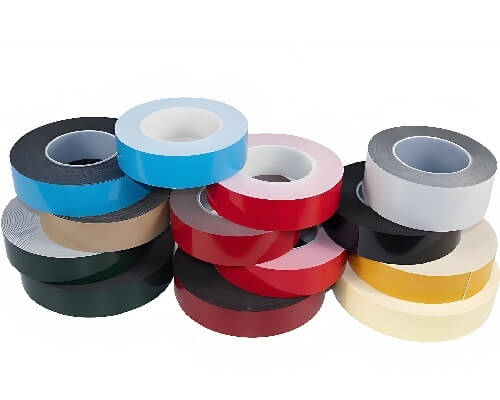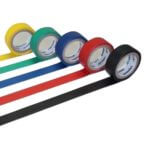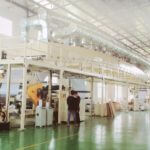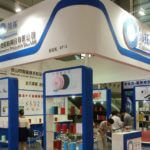What are the main differences between PE foam tape and PET tape?
What are the main differences between PE foam tape and PET tape?
PE foam tape, also known as polyethylene foam tape, is a versatile tape made with a closed-cell polyethylene foam base and an adhesive backing.
PET tape, also known as polyester tape, is a strong and durable tape constructed with a polyester film backing and an adhesive coating.
PE foam tape and PET tape are both types of adhesive tapes used for various applications, but they have different compositions and properties.
Here are the main differences between the two:
1. Material Composition:
PE Foam Tape: PE (Polyethylene) foam tape is made from a closed-cell polyethylene foam substrate with adhesive on one or both sides.
The foam provides cushioning and conformability, making it suitable for applications where sealing, damping, or gap-filling is required.
PET Tape: PET (Polyethylene Terephthalate) tape is made from a polyester film substrate with adhesive on one or both sides.
PET tape offers high tensile strength, dimensional stability, and excellent resistance to temperature, chemicals, and moisture.
2. Adhesive Properties:
PE Foam Tape: The adhesive on PE foam tape is typically a rubber or acrylic-based adhesive, chosen for its ability to bond well to a variety of surfaces, including plastics, metals, and wood.
It provides good initial tack and adhesion, along with flexibility to conform to irregular surfaces.
PET Tape: PET tape often uses silicone-based adhesive or acrylic adhesive, offering high temperature resistance and excellent chemical resistance.
PET tape provides strong adhesion to surfaces, including those with low surface energy, such as plastics and metals.
3. Thickness and Density:
PE Foam Tape: PE foam tape is available in various thicknesses and densities, ranging from low-density foams for light-duty applications to higher density foams for heavier loads and more demanding environments.
PET Tape: PET tape typically has a thinner profile compared to PE foam tape and is available in a range of thicknesses, with the polyester film providing strength and stability.
4. Applications:
PE Foam Tape: PE foam tape is commonly used for applications requiring cushioning, vibration damping, noise reduction, and gap-filling.
It is widely used in automotive, electronics, construction, and packaging industries.
PET Tape: PET tape is often used in applications requiring high tensile strength, dimensional stability, and resistance to extreme temperatures and chemicals.
It is commonly used in electrical insulation, circuit board assembly, masking, and high-temperature applications.
5. Adhesion:
PE Foam Tape: Typically uses a rubber-based or acrylic-based adhesive for good initial bond strength on various surfaces.
PET Tape: Can have pressure-sensitive or heat-activated adhesives depending on the application, offering strong and long-lasting bonds.
6. Cost:
PE Foam Tape: PE foam tape tends to be more cost-effective compared to PET tape, making it a preferred choice for applications where cushioning and conformability are primary concerns.
PET Tape: PET tape is generally more expensive due to its superior properties such as high temperature resistance and chemical resistance, making it suitable for specialized applications where performance is critical.
In summary, while both PE foam tape and PET tape are adhesive tapes, they differ in material composition, adhesive properties, thickness, density, applications, adhesion, and cost, making them suitable for different types of applications and environments.
Here are the features, advantages, and applications of PE foam tape and PET tape:
PE foam tape:
Features:
Material: PE foam is a lightweight, closed-cell foam that’s typically waterproof, chemical-resistant, and offers good thermal insulation.
Adhesive: PE foam tape can come with adhesive on one side (single-sided) or both sides (double-sided). The adhesive is usually rubber-based or acrylic-based, offering good initial bond strength to a variety of surfaces.
Customizable: PE foam tape comes in various thicknesses, widths, and colors (commonly white or black) to suit different applications.
Advantages:
Conformable: PE foam tape can easily conform to irregular or rough surfaces, creating a good seal.
Shock absorption: The foam base provides cushioning and shock absorption, protecting delicate components.
Gap filling: PE foam tape can fill small gaps and imperfections between surfaces.
Insulation: It can help insulate against temperature and noise.
Easy to use: No messy glue or fasteners required, and it’s easy to cut to size.
Relatively inexpensive
Applications:
PE foam tape is widely used across various industries, including:
Construction: Sealing windows and doors, gap filling around cabinets, adhering weather stripping
Automotive: Attaching trim, nameplates, and other components; gasketing
Signage: Mounting signs and displays
Appliance: Adhering components within appliances and electronics
HVAC: Sealing ducts and air conditioners
DIY projects: Mounting pictures, mirrors, and other household items
Overall, PE foam tape is a versatile and useful tool for a variety of applications where adhesion, cushioning, sealing, or insulation is needed.
PET tape:
Features:
Material: PET film provides high tensile strength, making the tape resistant to tearing and breaking.
Durability: PET tape offers excellent resistance to moisture, chemicals, abrasion, and UV light, allowing for long-lasting performance indoors and outdoors.
Temperature resistance: It can withstand a wide range of temperatures, making it suitable for various environments.
Adhesive: The adhesive on PET tape can be pressure-sensitive or heat-activated, depending on the application.
Advantages:
High strength and tear resistance: Ideal for heavy-duty applications where secure bonding is crucial.
Weatherproof and UV resistant: Withstands harsh weather conditions and sunlight, making it suitable for outdoor use.
Chemical resistant: Can handle exposure to many chemicals without degrading.
Dimensional stability: Maintains its shape and size over time, even under varying temperatures.
Smooth surface: Provides a clean and aesthetically pleasing finish.
Available in various thicknesses and widths to suit different needs.
Application Industries:
PET tape finds use in a wide range of industries due to its strength, durability, and versatility. Here are some common applications:
Electronics and Appliance Manufacturing: Securing components within electronics and appliances, EMI/RFI shielding
Automotive Industry: Paint masking during car painting, surface protection, part labeling
Printing and Graphics: Laminating documents, mounting signs and displays, vinyl graphics application
Construction: Sealing windows and doors, vapor barrier applications, surface protection during construction
Medical Devices: Securing medical equipment tubing and components
Aerospace Industry: Due to its high strength and temperature resistance, PET tape can be used in some aircraft assembly applications
Overall, PET tape is a valuable tool for industrial and professional applications requiring a strong, durable, and weatherproof adhesive solution.










